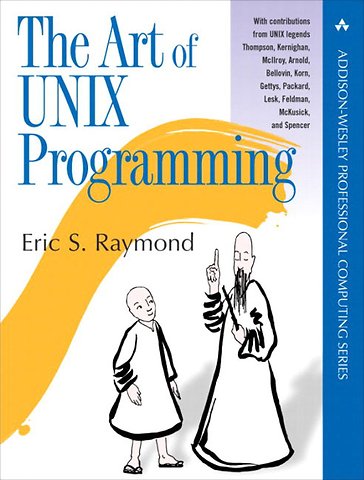Art of UNIX Programming, The
Paperback Engels 2003 9780131429017Samenvatting
"Reading this book has filled a gap in my education. I feel a sense of completion, understand that UNIX is really a style of community. Now I get it, at least I get it one level deeper than I ever did before. This book came at a perfect moment for me, a moment when I shifted from visualizing programs as things to programs as the shadows cast by communities. From this perspective, Eric makes UNIX make perfect sense."
--Kent Beck, author of Extreme Programming Explained, Test Driven Development, and Contributing to Eclipse
"A delightful, fascinating read, and the lessons in problem-solvng are essential to every programmer, on any OS."
--Bruce Eckel, author of Thinking in Java and Thinking in C++
Writing better software: 30 years of UNIX development wisdom
In this book, five years in the making, the author encapsulates three decades of unwritten, hard-won software engineering wisdom. Raymond brings together for the first time the philosophy, design patterns, tools, culture, and traditions that make UNIX home to the world's best and most innovative software, and shows how these are carried forward in Linux and today's open-source movement. Using examples from leading open-source projects, he shows UNIX and Linux programmers how to apply this wisdom in building software that's more elegant, more portable, more reusable, and longer-lived.
Raymond incorporates commentary from thirteen UNIX pioneers:
Ken Thompson, the inventor of UNIX. Ken Arnold, part of the group that created the 4BSD UNIX releases and co-author of The Java Programming Language. Steven M. Bellovin, co-creator of Usenet and co-author of Firewalls and Internet Security. Stuart Feldman, a member of the Bell Labs UNIX development group and the author of make and f77. Jim Gettys and Keith Packard, principal architects of the X windowing system. Steve Johnson, author of yacc and of the Portable C Compiler. Brian Kernighan, co-author of The C Programming Language, The UNIX Programming Environment, The Practice of Programming, and of the awk programming language. David Korn, creator of the korn shell and author of The New Korn Shell Command and Programming Language. Mike Lesk, a member of the Bell Labs development group and author of the ms macro package, the tbl and refer tools,lex and UUCP. Doug McIlroy, Director of the Bell Labs research group where UNIX was born and inventor of the UNIX pipe. Marshall Kirk McKusick, developer of the 4.2BSD fast filesystem and a leader of the 4.3BSD and 4.4BSD teams. Henry Spencer, a leader among early UNIX developers, who created getopt, the first open-source string library, and a regular-expression engine used in 4.4BSD.
Specificaties
Lezersrecensies
Inhoudsopgave
Rubrieken
- advisering
- algemeen management
- coaching en trainen
- communicatie en media
- economie
- financieel management
- inkoop en logistiek
- internet en social media
- it-management / ict
- juridisch
- leiderschap
- marketing
- mens en maatschappij
- non-profit
- ondernemen
- organisatiekunde
- personal finance
- personeelsmanagement
- persoonlijke effectiviteit
- projectmanagement
- psychologie
- reclame en verkoop
- strategisch management
- verandermanagement
- werk en loopbaan
